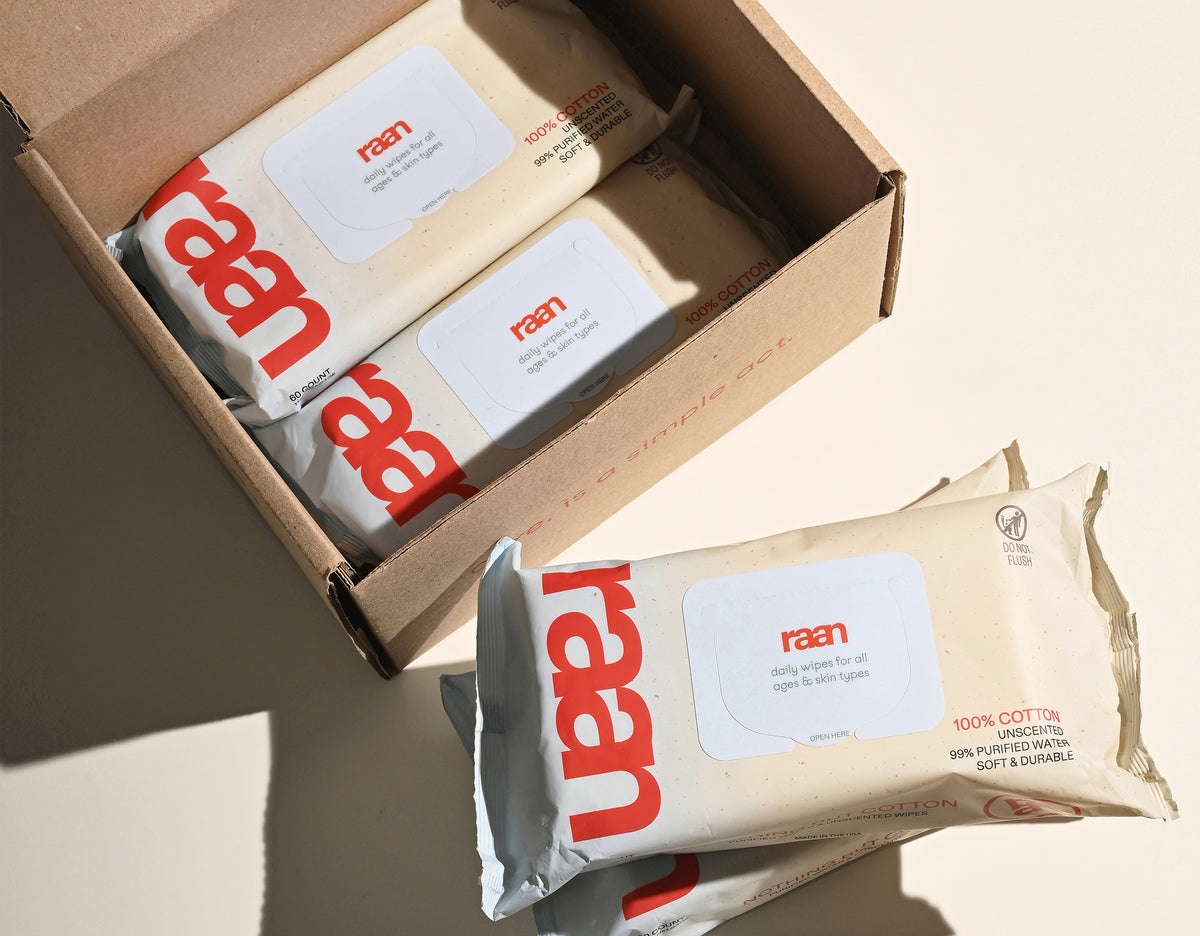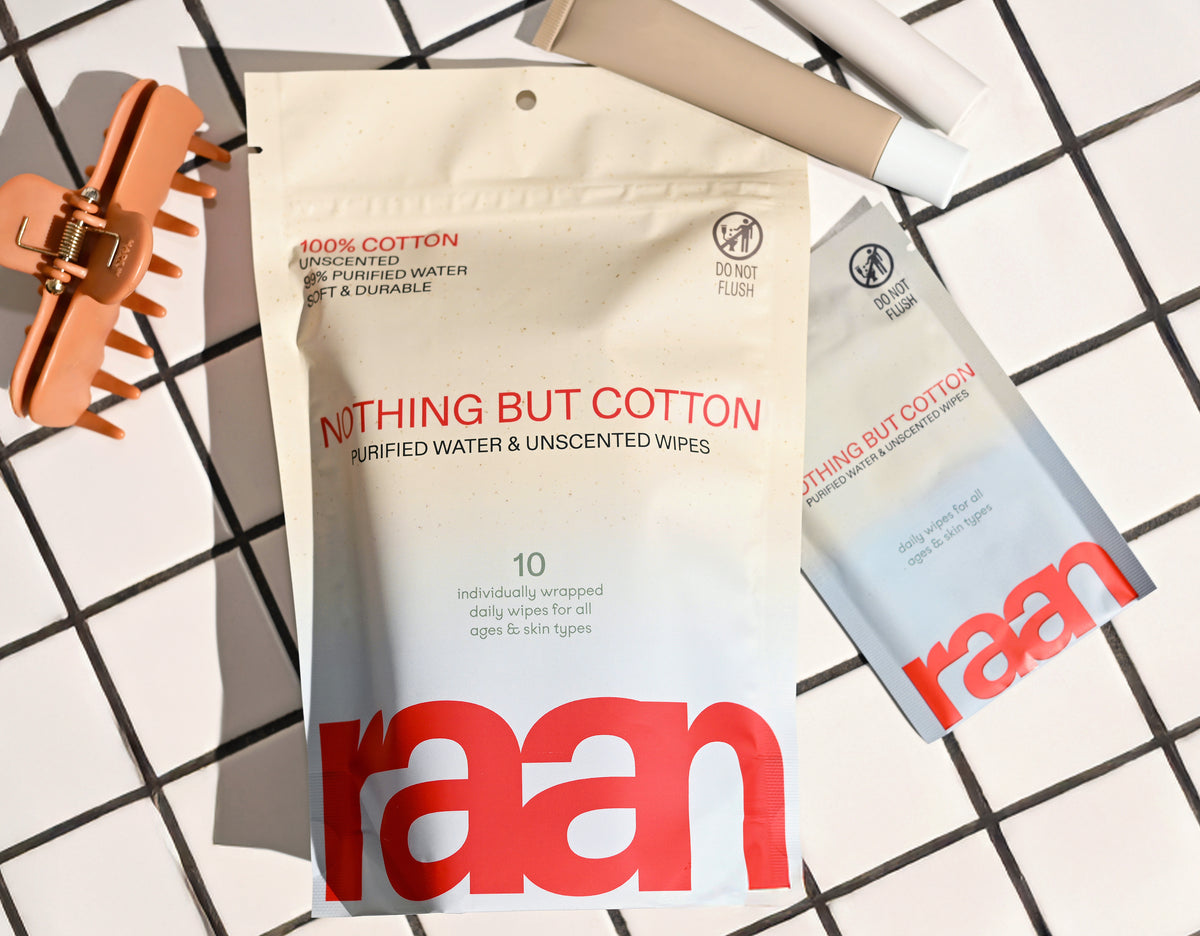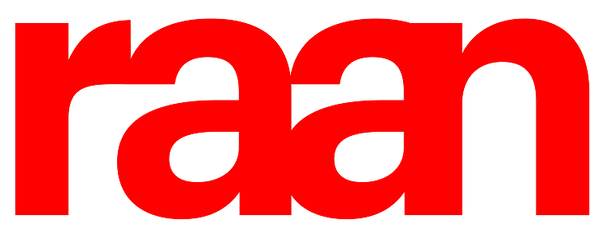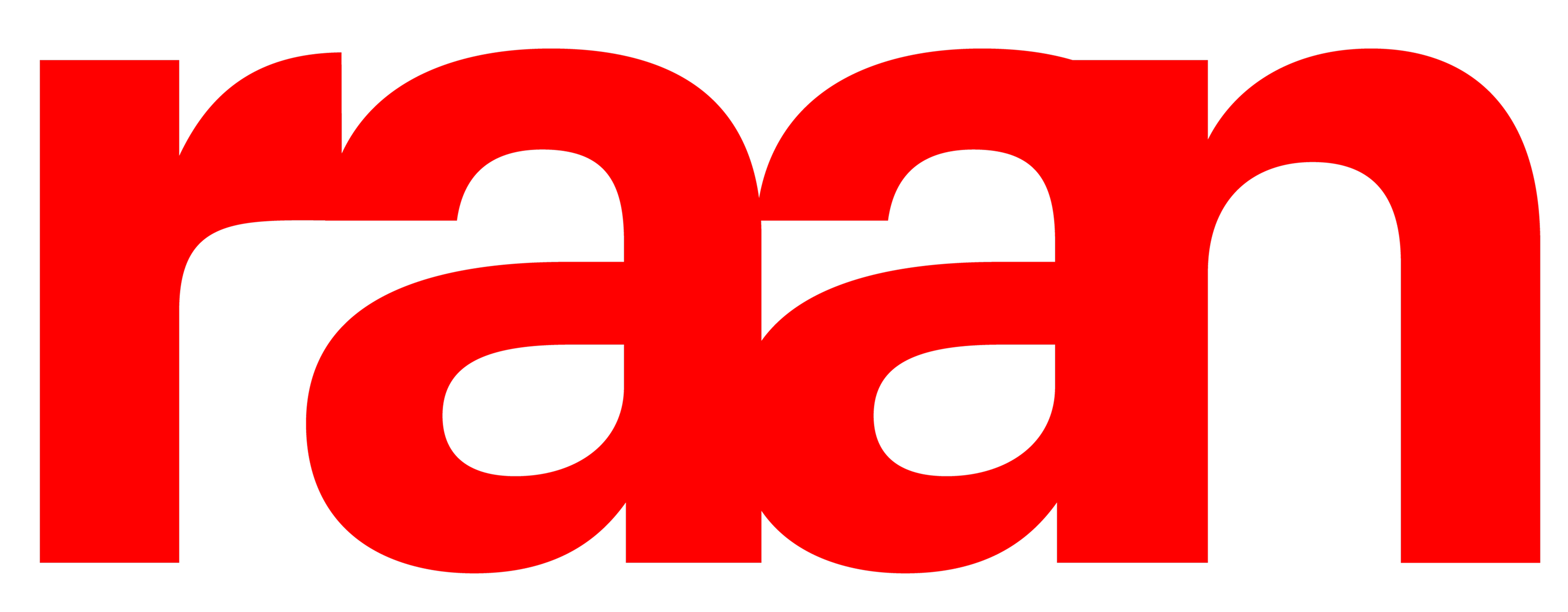Key Takeaways
- Huggies baby wipes are thick, hypoallergenic, and formulated without alcohol or parabens.
- These wipes are suitable for sensitive skin and have dermatologist recognition.
- Huggies wipes still contain synthetic preservatives and processed materials despite their clean image.
- Parents seeking full ingredient transparency may prefer Raan’s unbleached, 100% cotton wipes.
- Raan’s wipes feature only five EWG-verified ingredients, offering a cleaner alternative.
Table of Contents
- What Sets Huggies Baby Wipes Apart?
- Types of Huggies Baby Wipes – A Solution for Every Skin & Scenario
- Inside the Pack – Ingredient Breakdown & Skin Safety
- How to Choose the Right Huggies Wipe for Your Family
- Comparison Zone – Huggies vs. Pampers vs. Plant-Based Alternatives
- Ingredient Transparency - What's Really Inside
- Real-World Performance - Beyond Marketing Claims
- Safety Certifications - What They Actually Mean
- Ingredient Transparency - What's Actually Inside
- Material Science - Cotton vs. Synthetic Substrates
- Real-World Performance - How Different Wipes Actually Work
- Environmental Impact - Beyond the Marketing Claims
- Cost Analysis - Value Beyond Price Per Pack
Baby Wipes Huggies – A Deep Dive for Modern, Ingredient-Savvy Parents
What Sets Huggies Baby Wipes Apart?
Huggies has built its reputation on thick, absorbent wipes that handle everything from newborn diaper changes to toddler mealtime chaos. Their baby wipes huggies line features pH-balanced formulas, hypoallergenic testing, and recognition from the National Eczema Association for their gentler varieties.
The brand's core strengths lie in accessibility and consistency. With 4.8-star ratings across thousands of reviews, parents trust Huggies for reliable thickness that won't tear mid-cleanup. Their alcohol-free, paraben-free promise addresses basic safety concerns, while multiple size options serve different family needs.
For parents wanting complete transparency, this leaves questions about what's actually touching their baby's skin. If you’re seeking a truly minimal, natural option, consider the only unbleached, 100% cotton baby wipe for sensitive skin. For on-the-go convenience, you might also appreciate the unbleached, 100% cotton pocket wipe for sensitive skin.
Reality Check: While Huggies eliminates obvious irritants, their ingredient lists still include synthetic preservatives and undisclosed "cleansing agents." For parents wanting complete transparency, this leaves questions about what's actually touching their baby's skin.
The wipes work well for everyday messes, but families prioritizing ingredient simplicity often find themselves reading lengthy labels without clear answers about sourcing or processing methods.
Types of Huggies Baby Wipes – A Solution for Every Skin & Scenario

Huggies segments their wipe collection into distinct categories, each targeting specific needs and skin sensitivities.
Natural Care Sensitive leads their gentlest option, featuring 99% purified water with minimal added ingredients. Customer reviews consistently highlight its softness, earning 4.8/5 stars from over 20,000 parents dealing with diaper rash concerns.
Simply Clean offers their no-frills approach – thick, effective cleaning without added moisturizers or scents. Parents appreciate the straightforward formula for quick cleanups without residue.
| Wipe Type | Best Use Case | Key Feature | Pack Sizes |
|---|---|---|---|
| Natural Care Sensitive | Newborn/eczema-prone skin | 99% purified water | 56, 168, 504 count |
| Simply Clean | Everyday cleanup | No added moisturizers | 72, 216, 648 count |
| Special Care | Extra-sensitive skin | Cucumber & aloe | 56, 168 count |
While Huggies offers variety, parents seeking ultimate simplicity often find even their "sensitive" options contain more ingredients than necessary for basic cleaning. For a curated selection that’s ready for any mess, check out the mess-ready pack.
Inside the Pack – Ingredient Breakdown & Skin Safety
Huggies Natural Care Sensitive contains purified water (99%), plus citric acid, sodium citrate, and sodium benzoate for preservation. Their cleansing agents remain proprietary, listed simply as "mild cleansing agents" without specific identification.
The brand earns points for eliminating alcohol, parabens, and phenoxyethanol – common irritants in conventional wipes. Independent testing confirms hypoallergenic properties, with dermatologist oversight during development.
However, the "free from" approach still leaves synthetic preservatives and undisclosed cleansing compounds. Parents reading labels find terms like "purified water" and "mild cleansing agents" without insight into processing methods or sourcing standards.
For families wanting to know exactly what touches their baby's skin – down to processing methods and sourcing – Huggies' approach may feel incomplete despite meeting basic safety standards.
How to Choose the Right Huggies Wipe for Your Family
Start with your baby's skin sensitivity level. Newborns and children with eczema benefit from Natural Care Sensitive's minimal ingredient approach, while active toddlers handle Simply Clean's straightforward formula well.
Consider usage patterns next. Heavy diaper-changing periods require bulk packs (500+ count), while travel and daycare need portable 56-count options. Parents managing multiple children often prefer the middle-ground 168-count packs for balanced convenience and value.
Test thickness by feeling the wipe through packaging – Huggies maintains consistent quality, but individual preferences vary between their thicker Special Care and standard Simply Clean options.
Decision Framework:
• Sensitive/newborn skin → Natural Care Sensitive
• Daily cleanup/active toddlers → Simply Clean
• Eczema concerns → Special Care with cucumber aloe
• Multi-child households → Simply Clean bulk packs
Remember that even within Huggies' "sensitive" category, you're still choosing between varying levels of synthetic ingredients rather than truly minimal formulations.
Comparison Zone – Huggies vs. Pampers vs. Plant-Based Alternatives

When evaluating baby wipes huggies against competitors, material composition and ingredient transparency become key differentiators.
Huggies - Reliable Mainstream Choice
Best for: Parents wanting consistent quality with basic ingredient safety
Huggies delivers dependable thickness and hypoallergenic testing across their range. Their Natural Care line addresses sensitivity concerns while maintaining widespread availability and competitive pricing at $0.03-0.04 per wipe.
Pampers Aqua Pure - Water-Focused Formula
Best for: Families prioritizing high water content
Pampers Aqua Pure focuses on 99% purified water with minimal additives. The formula includes water, mild cleansing agents, and citric acid for pH balance. This streamlined approach appeals to parents seeking water-based cleaning without extra moisturizers or fragrances.
The wipes offer gentle cleansing for sensitive skin but may require multiple wipes for sticky messes due to their lighter formula. They're dermatologist-tested and hypoallergenic, making them suitable for newborns and children with reactive skin.
Pros:
- 99% water formula reduces irritation risk
- No fragrance or alcohol
- Dermatologist-tested for sensitive skin
Cons:
- Less effective on dried-on messes
- May require multiple wipes per cleanup
- Higher cost per effective clean
Honest Company - Plant-Based Focus
Best for: Eco-conscious families seeking plant-derived ingredients
Honest Company wipes feature plant-based materials and ingredients like chamomile and aloe. They're free from chlorine processing, parabens, and alcohol. The brand emphasizes sustainability with biodegradable wipes and minimal packaging waste.
While the plant-based approach appeals to environmentally minded parents, the wipes can sometimes feel thinner than conventional options. They work well for routine cleanups but may struggle with tougher messes that require more durability.
Pros:
- Plant-based and biodegradable materials
- No chlorine processing or harsh chemicals
- Sustainable packaging approach
Cons:
- Thinner material may tear during use
- Premium pricing for eco-features
- Limited availability in some regions
Raan Cotton Wipes - Material Innovation
Best for: Families demanding complete ingredient transparency and plastic-free materials
Raan takes a fundamentally different approach with unbleached, 100% cotton material instead of synthetic blends. The formula contains just five EWG-verified ingredients: purified water, food-grade preservatives (sodium benzoate, potassium sorbate), ethylhexylglycerin for skin conditioning, organic aloe, and citric acid for pH balance. This transparency eliminates guesswork about what touches your family's skin.
The cotton construction provides superior absorbency and durability compared to plastic-fiber wipes, while the minimalist formula reduces irritation risk for sensitive skin. Each ingredient serves a clear purpose without unnecessary additives or fragrance masking agents that complicate ingredient lists.
For those just starting their journey toward ingredient-conscious parenting, the starter set is a convenient way to try a variety of natural, cotton-based wipes.
Ingredient Transparency - What's Really Inside
Understanding wipe ingredients becomes crucial when you're using them multiple times daily on sensitive skin. Most baby wipes huggies and competing brands contain 10-15 ingredients, often with vague terms like "cleansing agents" or "skin conditioners" that don't specify exact components.
| Brand | Material Base | Ingredient Count | Preservative Type | EWG Verification |
|---|---|---|---|---|
| Huggies Natural Care | Synthetic blend | 12+ ingredients | Synthetic preservatives | Not verified |
| Pampers Aqua Pure | Synthetic blend | 8-10 ingredients | Synthetic preservatives | Not verified |
| Honest Company | Plant-fiber blend | 10-12 ingredients | Natural preservatives | Not verified |
| Raan Cotton Wipes | 100% unbleached cotton | 5 ingredients | Food-grade preservatives | EWG Verified |
The material difference extends beyond marketing claims. Synthetic wipe materials often contain plastic microfibers that can't biodegrade, while cotton fibers break down naturally. This matters not just for environmental impact, but for skin contact, natural fibers typically cause less friction and irritation during repeated use.
Preservative transparency also varies significantly. Food-grade preservatives like those in Raan wipes undergo stricter safety testing since they're designed for ingestion, providing an extra safety margin for products used around mouths and sensitive areas.
Real-World Performance - Beyond Marketing Claims
Performance testing reveals how baby wipes huggies and alternatives handle actual parenting challenges. Absorbency, durability, and cleaning effectiveness matter more than ingredient lists when you're dealing with diaper blowouts or sticky toddler hands at 3 AM.
Cotton-based wipes demonstrate superior liquid absorption due to natural fiber structure. A single cotton wipe typically absorbs 3-4 times its weight in liquid, compared to 1-2 times for synthetic materials. This translates to fewer wipes needed per cleanup and less waste overall.
Durability testing shows significant differences in tear resistance. Unbleached cotton maintains structural integrity when wet, while many synthetic wipes become fragile and prone to tearing during vigorous cleaning. This durability advantage becomes especially important during diaper changes that require thorough cleaning.
For sticky substances like food residue or sunscreen, material texture affects cleaning efficiency. Cotton's natural texture provides gentle mechanical cleaning action without scratching, while some synthetic materials either slip over residue or feel too abrasive on sensitive skin.
Safety Certifications - What They Actually Mean

Ingredient Transparency - What's Actually Inside
Huggies provides ingredient lists for their major wipe lines, though the level of detail varies. Natural Care wipes contain water, mild cleansing agents, and skin conditioners derived from plant sources. The brand avoids chlorine bleaching in their cloth material, which reduces potential chemical residues.
Most Huggies formulations include phenoxyethanol as a preservative system, along with cleansing agents like cocamidopropyl betaine. These ingredients have established safety profiles but may not align with parents seeking completely plant-based options.
The "99% water" claim applies to their Simply Clean line, meaning the remaining 1% consists of mild cleansers and preservatives. This minimal approach reduces the chance of skin reactions while maintaining cleaning effectiveness.
However, conventional baby wipes huggies still rely on synthetic materials and processing methods that some families prefer to avoid. For parents seeking complete ingredient transparency and natural materials, alternatives like Raan offer unbleached, 100% cotton with just five EWG-verified ingredients.
Material Science - Cotton vs. Synthetic Substrates
The substrate material determines how wipes feel, perform, and impact skin health. Most commercial wipes, including Huggies, use synthetic nonwoven fabrics made from polyester or polypropylene blends. These materials offer durability and consistent texture but can feel less natural against sensitive skin.
Synthetic substrates undergo chemical processing and may contain microplastics that aren't immediately visible. While effective for cleaning, they don't offer the breathable, naturally soft qualities of fiber-based materials.
Cotton-based wipes provide superior gentleness and absorbency. Unbleached cotton maintains the fiber's natural properties without harsh chemical processing. This makes a noticeable difference for babies with eczema, sensitive skin, or families who prefer earth-derived materials.
The manufacturing process matters too. Conventional wipes often use chlorine bleaching and synthetic bonding agents, while minimally processed cotton relies on the fiber's inherent strength and softness.
Real-World Performance - How Different Wipes Actually Work

| Feature | Huggies Natural Care | Huggies Simply Clean | Raan Cotton Wipes |
|---|---|---|---|
| Material | Synthetic nonwoven | Synthetic nonwoven | Unbleached 100% cotton |
| Ingredient Count | 8-10 ingredients | 4-5 ingredients | 5 EWG-verified ingredients |
| Certifications | NEA Seal, Hypoallergenic | Dermatologist-tested | EWG Verified, Cruelty Free |
| Packaging Plastic | Standard plastic lid | Standard plastic lid | 70% less plastic |
In daily use, Huggies wipes provide reliable cleaning power and convenient dispensing. The thicker varieties handle messy situations well, while sensitive formulations work for routine care. Parents appreciate the wide availability and consistent quality.
Cotton-based alternatives offer a different experience entirely. The natural fiber texture feels softer and more breathable, while the simplified ingredient list provides peace of mind for ingredient-conscious families. The trade-off comes in availability and price point. For more insights on the best options, see this guide to best cotton wipes.
Environmental Impact - Beyond the Marketing Claims
Disposable wipes create environmental challenges regardless of brand. Huggies has made efforts to reduce packaging waste and eliminate certain chemicals, but the fundamental issue remains: synthetic materials don't biodegrade quickly.
The company's sustainability initiatives include using plant-based materials in some formulations and reducing packaging plastic. However, the core substrate remains synthetic, and the wipes aren't compostable or flushable.
Families seeking lower environmental impact have several options. Some choose cloth wipes for home use, while others look for brands using biodegradable materials and minimal packaging. Raan's approach uses 70% less plastic packaging and natural cotton that breaks down more readily than synthetic alternatives. For a deeper dive into eco-friendly options, check out this article on biodegradable wipes.
Consider your usage patterns when evaluating environmental impact. Heavy users might benefit more from switching to a more sustainable option, while occasional users may prioritize other factors like convenience or specific skin sensitivities. For a scientific perspective on the environmental costs of disposable wipes, see this external resource.
Cost Analysis - Value Beyond Price Per Pack
Baby wipes huggies typically cost $0.02-0.04 per wipe depending on the line and pack size. Bulk purchasing and subscription services offer the best per-unit pricing. Factor in the durability of each wipe, thicker options may require fewer wipes per use.
Hidden costs include potential skin reactions requiring additional products, environmental disposal fees in some areas, and the convenience factor of wide retail availability. Huggies' consistent quality reduces waste from torn or ineffective wipes.
Premium alternatives cost more upfront but may offer better value for families with specific needs. Natural and organic options typically run $0.05-0.08 per wipe but provide ingredient transparency and gentler materials that some families find worth the investment.
Calculate your monthly usage to understand true costs. A family using 8-10 wipes daily spends roughly $15-25 monthly on conventional wipes, while premium options might cost $25-40 for the same usage. For more on how many wipes you’ll need per month, see this helpful breakdown: how many wipes per month.
Frequently Asked Questions
What ingredients are used in Huggies baby wipes, and how do they affect sensitive skin?
Huggies baby wipes use a blend of synthetic preservatives and cleansing agents designed to be hypoallergenic, alcohol- and paraben-free, which helps reduce irritation for sensitive skin. However, they still contain processed materials and synthetic ingredients that may not offer the full transparency some parents seek.
How do Huggies baby wipes compare to natural alternatives like Raan’s 100% cotton wipes in terms of ingredient transparency and safety?
Huggies wipes provide basic safety with hypoallergenic formulas but include synthetic preservatives and less transparent ingredients. In contrast, Raan’s wipes use unbleached, 100% cotton and only five EWG-verified ingredients, offering a simpler, more transparent option that prioritizes minimal processing and ingredient clarity for sensitive skin.
What are the differences between the various types of Huggies baby wipes, such as Natural Care Sensitive and Simply Clean?
Huggies Natural Care Sensitive wipes are formulated with added moisturizers and are recognized for being gentler, targeting sensitive skin and eczema-prone babies. Simply Clean wipes focus on basic cleansing with fewer additives and a lighter formula, suitable for everyday messes but with less emphasis on skin conditioning.
Are Huggies baby wipes suitable for babies with eczema or very sensitive skin?
Huggies offers hypoallergenic wipes recognized by dermatologists and the National Eczema Association for gentler varieties, making them generally suitable for babies with sensitive skin or mild eczema. However, parents seeking full ingredient transparency or minimal synthetic exposure might consider alternatives with simpler, verified ingredients.






